Resilient Buildings that Bounce Back
Wind Load Movement
Wind loading has long been understood as a factor in high-rise building conditions. Most buildings are designed to withstand wind loads up to a certain level and then are designed to sway safely in high wind events. This movement can be perpendicular and/or parallel to an expansion joint and has an impact on those joint designs. This condition is common where a low horizontal building span meets with a taller vertical element, such as the lobby of a hotel with an adjacent a high-rise component. Movement in these joints is typically 50 percent or so.
Over time, the normal anticipated effects of wind pressure or the impact of a severe wind event on the sides of buildings can lead to some serious issues. These can include torsion forces or swaying of the building at the very least. That can lead to cladding erosion or failure or structural failures due to excessive wind loading. Hence, in the interest of designing a resilient high-rise structure, it must be able not only to withstand high wind loads, but also to work with them. That means that, as with seismic activity, expansion joint systems should be able to “flex” and yet remain in place as the building sways or torques. That way, the expansion joint covers can remain in place and the integrity of the building materials can be maintained.
For all of these different conditions—thermal, seismic, and wind—architectural expansion joint solutions are available that can help buildings handle movement. This helps them retain their structural integrity, protect people and property, and provide a more resilient means to keep the building functional and aesthetically intact.
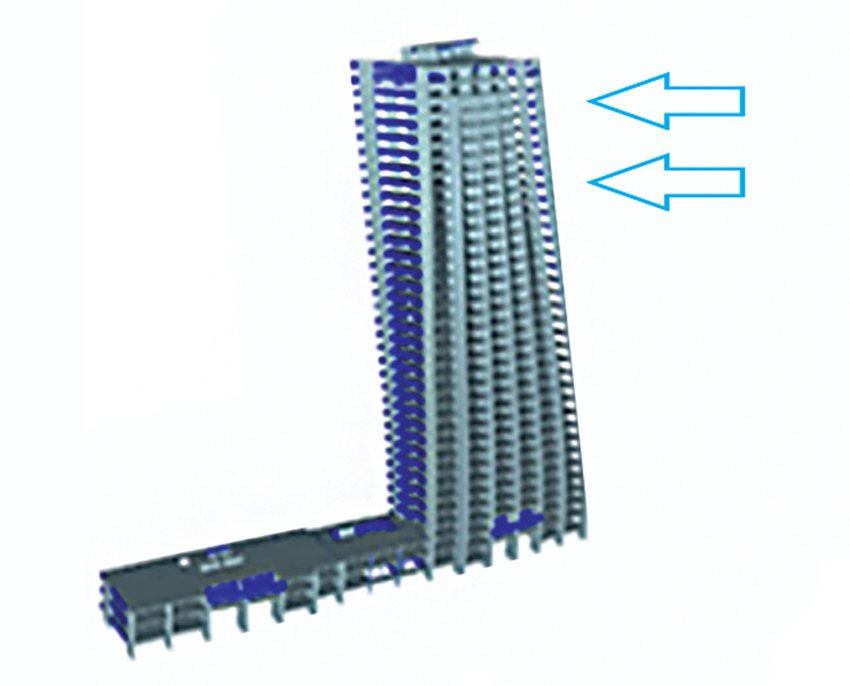
Photo courtesy of Inpro
The impact of wind on high-rise buildings needs to be addressed not only in the structure but in the type of expansion joints used to address building sway.
PROPANE AS A RESILIENTENERGY SOURCE
Propane is a well-known and commonly available fuel that is often used because of its versatility. In locations where other options aren’t available, such as rural, agricultural, or off-grid areas, propane can be delivered and stored on-site to provide a reliable energy source. Although commonly stored in liquid form in pressurized tanks, it is dispersed as a gas that is similar in performance to natural gas.
From a resiliency standpoint, propane can fuel a building’s vital systems, including power generation, space heating, and water heating. That can be significant during severe weather events or other disruptions since it can allow the building to continue operating at times when it may be needed most. If the electrical supply to the building is disrupted due to a power outage, standby generators fueled by propane enable the people in the building to still function by providing uninterruptible power. On-site generators can also protect critical systems, including security, refrigeration, lighting, automatic doors, and IT systems, in addition to heating and air conditioning. At the same time, propane-fueled appliances such as water heaters, can continue to operate without interruption. In the past, commercial standby generators were typically powered by expensive diesel fuel. Today, manufacturers offer several affordable, propane-fueled standby generators that are powerful enough to serve a variety of commercial building sizes, with capacities of up to 400 kW – 2.5 MW of electricity.
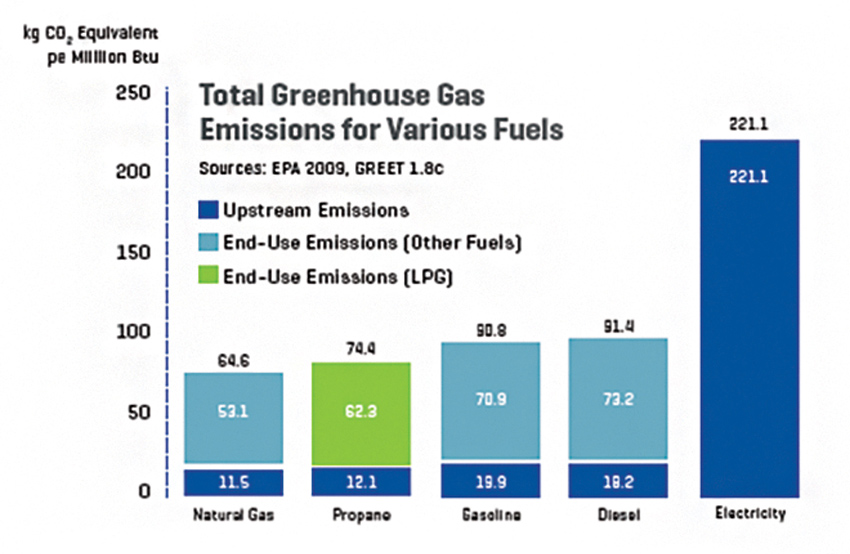
Image courtesy of Propane Education and Research Council (PERC)
The relative environmental impact of propane compared to other fossil fuels, including electricity from coal-fired plants, is shown in this graph.
Environmental Characteristics
According to the U.S. Environmental Protection Agency (EPA) “LPG (propane) is considered a clean fuel because it does not produce visible emissions. However, gaseous pollutants such as nitrogen oxides (NOx), carbon monoxide (CO), and organic compounds are produced, as are small amounts of sulfur dioxide (SO2) and particulate matter (PM).” The EPA goes on to point out that some of the factors contributing to those small amounts of pollutants have less to do with the actual fuel and more to do with equipment, including burner design, burner adjustment, boiler operating parameters, and flue gas venting. Further, things like improper design, blocking and clogging of the flue vent, and insufficient combustion air need to be avoided.
Compared to other options, such as fuel oil or diesel-powered generators, propane is a cleaner fuel that can reduce CO2 emissions. That is also true compared to grid-provided electricity that is produced in coal-fired generating plants. Propane use can also be cheaper to use than some of the more polluting alternatives. For example, a YMCA facility in the state of Maine switched from using heating oil to propane for its space and water heating, resulting in a CO2 emissions reduction of 183,000 pounds per year — the equivalent of taking 17 cars off the road every year. Similarly, a propane condensing tankless water heater can save building owners or operators up to 50 percent on their water heating costs when compared with the costs of operating a standard electric storage tank heater.
For greater reductions in emissions and environmental impacts, propane can be used as a supplement to other on-site energy sources. In cases where solar photovoltaic panels or wind turbines are used to generate electricity off-grid, a propane generator can provide auxiliary power when solar or wind is not available or when stored battery voltage cannot meet the electrical needs. Similarly, propane can be a supplemental fuel for commercial solar thermal systems which store solar-heated water, provide efficient backup heating at thermal efficiencies greater than 95 percent, and offer controls that easily integrate with upstream solar systems to control flows and temperatures. Biomass fuel systems, including wood, pellets, dry shelled corn, and other indigenous plant materials, typically require an auxiliary system for times when the fire is out, or the biomass system is unable to meet a variable heating load. In those cases, propane’s flexibility makes it an excellent energy source.
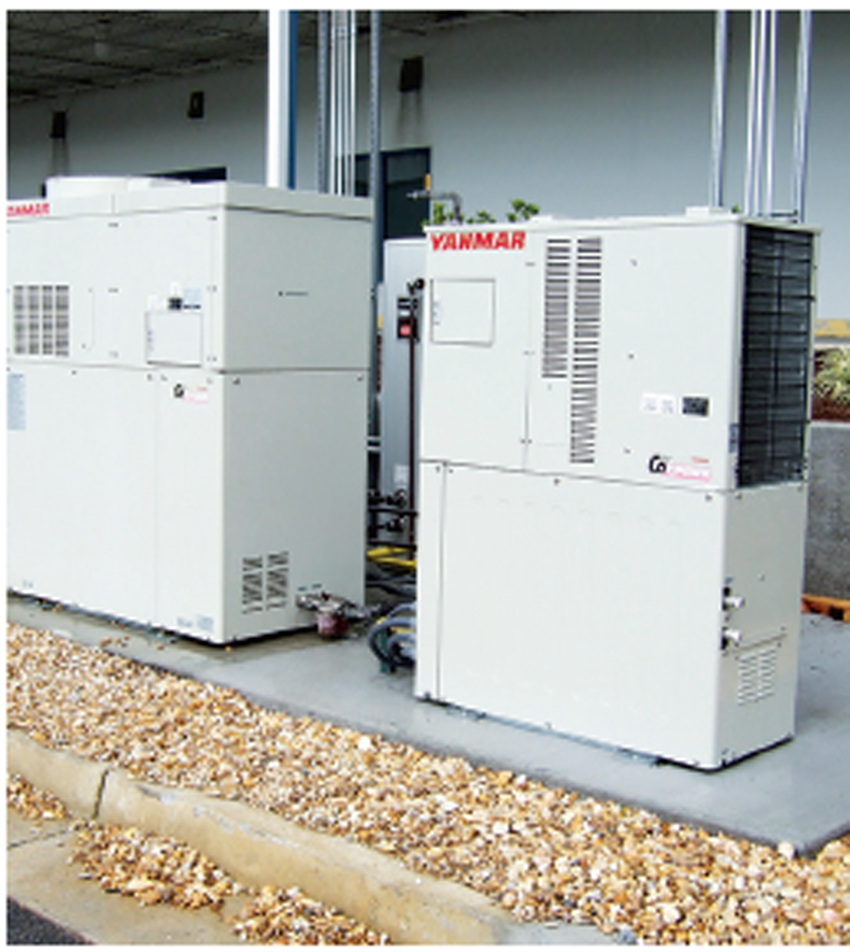
Photo courtesy of Propane Education and Research Council (PERC)
Propane-fueled combined heat and power (CHP) systems help commercial buildings control energy use and cost on-site, plus provide a significant amount of grid-free resiliency.
Notice

www.ambico.com
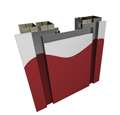
www.inprocorp.com
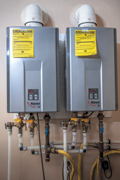
www.propane.com









